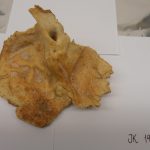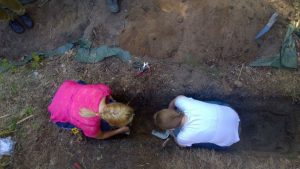Samples, ethics and excavations
The samples – mostly bones or teeth – derive from ancient human remains, individuals who have lived hundreds or thousands of years ago. Consequently, their identities, as well as life histories, languages and beliefs remain unknown. Burial customs may reveal something about the social status of the individual and perhaps whether they were christian or not.

In an optimal situation, the human remains are obtained directly from archaeological excavations, although this is rarely the case. The vast majority of sampled materials have been excavated dozens of years ago, and stored in different museums ever since.
During this time, the bones have been exposed to changing and varying conditions, including warmth and dry air, unfavourable for the preservation of DNA. Moreover, generations of researchers have handled them with bare hands, rendering bones susceptible to contamination by modern DNA. Therefore, the DNA yield from old museum specimens is typically lower than from samples deriving directly from excavations. Luckily enough, many bones have nevertheless been stored, even though a century (or much less) ago nobody could imagine even in their wildest dreams that the old bones could one day be such a source of information as they currently are.

Archaeological excavations are expensive and time-consuming – much more so than aDNA laboratory work nowadays! They are not carried out in large numbers, and for example in Finland, most excavations are currently so-called rescue excavations conducted at sites threatened to be destroyed by communal planning and construction projects. Due to their starting points, these studies are often tightly scheduled and budgeted. More importantly, the investigated sites are determined by modern land use – not by sites’ potential importance or suitability for solving certain scientific questions.

One of our goals is to promote archaeology in Finland and North-East Europe, and to get more resources to the basic research of the ancient.
Up to this point, the project has financed a small scale survey and excavation on Seili island, where a leprosy hospital existed in 16-18th centuries. Turku archipelago, South-Western Finland.
The excavation report can be obtained from here.
All ancient samples studied by us have been obtained following the rules and conventions of the research and administrative institutions managing the respective anthropological and archaeological collections, the National Board of Antiquities in Finland, and numerous collaborating parties abroad. The modern samples, to which the ancient ones are compared, have been obtained with the informed consent of the sample donors. In all cases, human remains and samples are handled responsibly and with dignity throughout the research process.